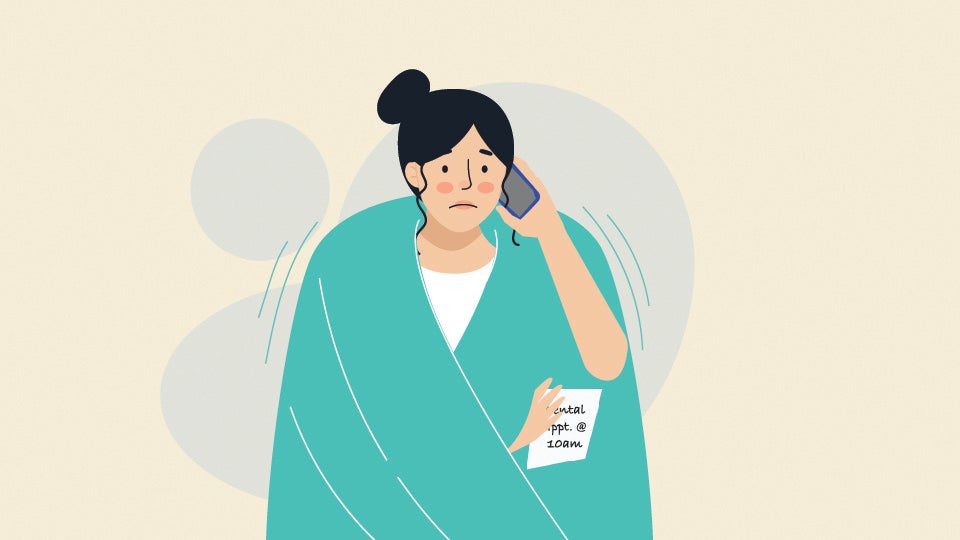Keeping your teeth clean is crucial for making sure your teeth stay healthy. But knowing how long you can expect teeth to last gives you a more complete idea of just how beneficial good oral hygiene is for your mouth.
Teeth are built to last your entire lifetime if they are well cared for through brushing, flossing, and regular visits to your dentist. While accidents can cause damaged or missing teeth, periodontal disease that develops in your gums is actually the leading cause of tooth loss in adults. Cavities are also a prevalent cause of tooth damage that can shorten a tooth's lifespan.
Dentists are able to calculate tooth longevity using a formula based on mortality rates and expected tooth health decline. Depending on the location of teeth in the mouth, the average lifespan of a tooth can range from 27 to 71 years. Fortunately, the longevity of your teeth can be extended with good oral hygiene.
The Life Cycle of a Tooth and Its Common Issues
People go through two sets of teeth in their lifetime, typically losing all of their first set before they reach the age of 12. Regardless of whether a person has baby teeth, also known as primary or deciduous teeth, or permanent teeth, cavities can be an equal problem in both sets.
If cavities are not addressed, they can move deeper into the tooth, eventually exposing the pulp at the tooth’s center. When the tooth pulp is exposed, it can leave you in pain and lead to infections. A root canal procedure is needed to clean out any infection or dead tissue if tooth decay has entered the pulp.
Eruption and Growth Stages With a Spotlight on Cavities
Tooth buds form in a baby’s mouth during the first month of development inside the womb. As deciduous or baby teeth erupt and are lost in childhood, permanent teeth will begin to take their places in the mouth.
You can expect a baby to begin cutting their first set of teeth between 6 and 12 months of age. Usually, after you see the first signs of a tooth coming in, it takes about eight days for the tooth to fully erupt.
By the time children are 2 ½ years old, they should have most of their deciduous teeth. Even in these younger years, when parents are solely responsible for brushing their baby’s teeth, tooth decay can develop. In fact, 23% of children between the ages of 2 and 5 have cavities in the US.
As children grow, they start losing their deciduous teeth around the age of 6. According to the CDC, 52% of children between the ages of 6 and 8 in the US suffer from some presence of tooth decay in their deciduous teeth.
As children’s teeth fall out and are replaced by permanent teeth, oral hygiene habits that result in cavities in their deciduous teeth can continue in their new adult teeth unless their habits are improved. New adult teeth may take around six months to a year to fully grow in after children lose their deciduous teeth.
Of young adults between the ages of 18-34, 82% have at least one cavity or cavity filling in their mouths.
Although tooth decay is prevalent, it is still preventable. Untreated cavities will continue to get bigger and deeper, leading to pain, possible infection, and more costly procedures to repair the damage. At every stage of tooth development, good oral hygiene and regular visits to the dentist will keep your mouth healthy so the lifespan of each tooth can be lengthened.
Tooth Anatomy: Navigating From Enamel to Exposed Pulp
Teeth comprise several different layers, each with its own significant function. Cavities make their way through each layer, if not addressed by your dentist, causing more painful and costly damage the deeper they are allowed to go. Tooth decay may even be severe enough that the tooth must be pulled.
The Enamel
The hard outside layer of a tooth is called the enamel. This is a tooth’s primary protection and is the part of the tooth you brush every morning and night. The enamel is the hardest material in your body and it is made of a translucent, glossy material that is different from bone.
The Dentin
Below the enamel is the dentin layer. This layer is still hard, though softer than the enamel, and has a yellowish hue. Dentin is the thickest layer in the tooth. It supports the enamel and is the last layer of protection for the pulp cavity. If tooth decay develops in the enamel and is not treated, it will begin forming a hole in the dentin layer as well.
The Dental Pulp/Pulp Cavity
The pulp is in the center of the tooth, below the dentin. The pulp’s soft core has nerves and blood vessels growing through it. If a cavity is allowed to get this far inside the tooth, the exposed dental pulp can be very painful, especially sensitive to different temperatures of food and drinks.
Common Dental Issues Explored: Cavities and Exposed Pulp
Plaque is a sticky film that accumulates on the teeth every day and harbors bacteria that feast on sugars from the food you eat. If plaque is not removed from your teeth through regular brushing, it can harden, allowing bacteria to wear away the enamel without being easily removed. The constant presence of bacteria living in plaque can wreak havoc on your oral health in more ways than one.
While tooth decay leads to loss of the tooth, gum disease can have a large impact on your oral health as well. If the hardened plaque gets below the gum line, it creates pockets inside your gums where bacteria can accumulate. This causes the gums to become red and inflamed. If gum disease progresses, it develops into periodontitis, which causes the gums to recede, leaves teeth loose, and can even lead to tooth and bone loss.
Essential Treatments: Addressing Cavities and Exposed Pulp
If tooth decay is severe, the tooth may need to be removed if it can not be repaired with a root canal procedure. Crowns can be used to cover repaired cavities in teeth, but tooth decay that has reached the pulp must first be cleaned out because the bacteria or damaged tissue will fester into an infection otherwise.
If you need to have a tooth pulled because it is beyond repair, it is essential that a blood clot form in the root cavity to protect the nerves and bone from further infection. The life cycle of a blood clot following a tooth extraction is short-lived and only lasts about ten days as your mouth heals.
While there are treatments to repair your teeth from tooth decay, the painful damage that cavities cause can all be avoided by a few simple daily habits that you can put into practice. A few tips to make sure your teeth get the attention they need are:
Brush your teeth when you wake up instead of waiting until after breakfast when you are rushing out the door.
Set a two-minute timer while you brush your teeth.
Avoid brushing your teeth for about 20 minutes after consuming acidic foods or drinks.
Keep a bag of flossers in your glove compartment in your car or in your desk at work.
Brush your teeth before you start to feel sleepy in the evening.
Schedule your next regular appointment with your dentist.
If you are searching for an experienced local dentist, Smile Generation can help you find the right dentist in your community. Use our Find a Dentist tool today to browse dentists in your area.
Find your trusted, local dentist today!
Smile Generation blog articles are reviewed by a licensed dental professional before publishing. However, we present this information for educational purposes only with the intent to promote readers’ understanding of oral health and oral healthcare treatment options and technology. We do not intend for our blog content to substitute for professional dental care and clinical advice, diagnosis, or treatment planning provided by a licensed dental professional. Smile Generation always recommends seeking the advice of a dentist, physician, or other licensed healthcare professional for a dental or medical condition or treatment.
Sources
Periodontal (Gum) Disease." NIH, Aug. 2021, https://www.nidcr.nih.gov/research/data-statistics/periodontal-disease
Dental Caries (Tooth Decay) in Adults (Ages 20 to 64 Years)." NIH, Nov. 2022, https://www.nidcr.nih.gov/research/data-statistics/dental-caries/adults
Anatomy and Development of the Mouth and Teeth." Johns Hopkins Medicine, 27 Nov. 2023, https://www.hopkinsmedicine.org/health/wellness-and-prevention/anatomy-and-development-of-the-mouth-and-teeth
Dental Caries in Primary Teeth." CDC, 10 Sept. 2019, https://www.cdc.gov/oralhealth/publications/OHSR-2019-dental-caries-primary-teeth.html
Kay E., D. Locker, A. Blinkhorn, "A method of estimating tooth life expectancy." NIH, Nov. 1996, https://pubmed.ncbi.nlm.nih.gov/9238601/









